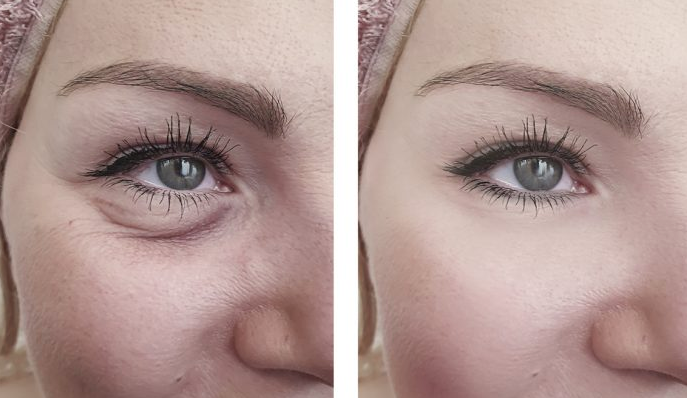Eye Bag Removal in Spain
Find the best clinics for Eye Bag Removal in Spain
With Medijump you can browse 7 facilities offering Eye Bag Removal procedures in Spain. The cheapest price available is $2,134 in Marbella. And for the cheapest price globally, prices start from $108 in Thailand.
Eye Bag Removal in Marbella
Price: $ 2,134
Eye Bag Removal in Barcelona
Price: $ 2,562
Thailand offers the best prices Worldwide
Price: $ 108
From 4 verified reviews
Ana Martínez Contreras, 18 September 2020
Me operè con el doctor Antolín,por un problema de salud,ya que tenía un importante faldón abdominal.No tengo palabras para describir el excelente trabajo que tanto él como todo su equipo han hecho.Solo tengo palabras de agradecimiento hacia él,me ha cambiado totalmente la vida.Destacar su gran profesionalidad,así como el trato cercano y humano recibido.Muchísimas gracias por todo, es palpable cuando alguien pone el corazón en lo que hace.Recomendable 100% y un equipo inmejorable.
From 30 verified reviews
Mariajose, 23 September 2020
Mi experiencia está siendo muy buena muy buen trato y muy profesionales volvere sin duda
From 30 verified reviews
Mariajose, 23 September 2020
Mi experiencia está siendo muy buena muy buen trato y muy profesionales volvere sin duda
From 104 verified reviews
Virginia Elena Carrero Planes, 22 September 2020
Tengo que decir que mi experiencia con el DR. Benito y su equipo ha sido excelente. .A pesar de la complejidad de mi situación el proceso operatorio se condujo perfectamente y ahora tengo la tranquilidad de saber que todo está bien y el resultado es armonioso y totalmente integrado en lo que soy yo. Si alguna vez volviera a precisar de su intervención sin duda me pondría en sus manos con plena confianza.
From 130 verified reviews
Maria Luaces, 17 September 2020
I am on vacation in Vigo. I have found the attention, the treatment, the facilities, the efficiency, the professionals out of 10. I recommend this hospital without hesitation.
Ocean Clinic, located in Calle del Mediterraneo, Marbella, Spain offers patients Eye Bag Removal procedures among its total of 51 available procedures, across 2 different specialties. The cost of a Eye Bag Removal procedure ranges from $2,134 to $4,374, whilst the national average price is approximately $2,645. There are many specialists available at the Clinic, with 6 in total, and they have multiple recognized accreditations, including: ISO 9001:2008IPRAS (International Confederation for Plastic Reconstructive & Aesthetic Surgery)
Clinica Dr. Pedro Antolin - Alcoi, located in Calle Max Planck, Alicante, Spain offers patients Eye Bag Removal procedures among its total of 26 available procedures, across 1 different specialties. The cost of a Eye Bag Removal procedure starts from ฿96,000, whilst the national average price is approximately ฿95,200. All procedures and treatments are undertaken by the lead specialist at the Clinic, and they are accredited by The American Society for Aesthetic Plastic Surgery
WHY US?
At Medijump, we're making medical easy. You can search, compare, discuss, and book your medical all in one place. We open the door to the best medical providers worldwide, saving you time and energy along the way, and it's all for FREE, no hidden fees, and no price markups guaranteed. So what are you waiting for?

Free

Best Price

Widest Selection

Risk-Free
What you need to know about Eye Bag Removal in Spain

Eye bag removal, also known as blepharoplasty of the lower eyelid, is a cosmetic surgery to correct excess fat, loose skin, and wrinkles of the lower eye area. As the name suggests, the main goal of this surgery is to remove eye bags.
Your skin gradually loses elasticity and fat padding as you age. This causes your lower eyelid to appear wrinkled, puffy, and baggy. With eye bag removal, the appearance of your eye will be improved and any signs of aging will be reduced. The surgery works by removing any excess fat and skin from the under-eye area, giving it a tighter appearance. Since there are delicate structures around the under-eye, this surgery requires a precise and delicate approach.
The ideal candidate for this surgery is individuals who are physically and psychologically healthy, look tired even with adequate sleep, have under-eye bags that are present throughout the day, and do not have any health conditions such as high blood pressure and glaucoma. You also need to be 18 years of age and above to be able to undergo this procedure.
What does the Procedure Involve?
There are several surgical techniques available to remove the eye bags. The technique used depends on your goals, as well as your anatomy.
Before the procedure, your surgeon will mark your lower eyelids to help them know where to make incisions. Then, you will be given either general or local anesthetic. With general anesthesia, you will be asleep throughout the procedure, while with local anesthesia, only the affected area is numbed.
Your surgeon will begin to create incisions. The location of the incision will depend on the technique used:
-
Traditional blepharoplasty involves creating an incision just under the eyelashes. Then the fat is extracted from the lower lid and some excess skin is removed.
-
Transconjunctival blepharoplasty involves an instrument called electrocautery to create a cut inside your lower eyelid instead of the regular incision outside.
-
Pinch blepharoplasty involves extracting fat through the inside of your eyelid. Then, a “pinch” of skin from the area is removed.
-
Canthopexy is the simplest way to eliminate eye bags. This procedure involves tightening the lower eyelid and elevating its position.
How Long Should I Stay in Spain?
Eye bag removal is performed as an outpatient procedure, so you can leave the hospital on the same day. However, you should plan to stay in Spain for at least 7 days for initial recovery and to attend follow-up checkups as your surgeon will monitor your healing throughout these appointments. Your stitches will also be removed during one of these visits, usually within 5 to 7 days following the surgery.
What's the Recovery Time?
You should be able to return to most of your normal activities, including work, within 5-7 days following your eye bag removal surgery. However, any strenuous activities, such as working out and heavy lifting, should be avoided for around one month.
What About Aftercare?
Your surgeon will give you aftercare instructions on how to care for yourself after eye bag removal. These usually include:
-
Rest with your head elevated and use ice packs or compresses on the affected area to reduce swelling.
-
Ensure to keep your incisions clean by gently washing them. Wash your hands before you touch or go near the incisions. These will reduce the risk of infection.
-
Wear darkly tinted sunglasses to protect your eyes as your skin heals.
-
Avoid direct exposure to the sun during your recovery period.
-
Avoid any activities that may dry up your eyes, such as reading, watching television, or using your phone for too long.
-
For the first couple of days, eat soft and chewable foods.
-
Stay hydrated by drinking plenty of water.
-
Only take the medication prescribed for you. If you do need to take other drugs, such as aspirin, consult your doctor first.
-
See your doctor immediately if you experience bleeding, skin that feels hot to the touch, fever, and pain that worsens over time.
Remember, following your surgeon’s aftercare instructions is essential to achieve and maintain the optimal results.
What's the Success Rate?
Eye bag removal is safe and effective and the results look very natural.’ However, you need to be aware that all surgical procedures carry possible risks and side effects. For eye bag removal, the potential risks include double vision, bleeding, cyst on the area where the skin was sewn together, drooping upper eyelid, necrosis, excessive muscle removal, infection, skin discoloration, vision loss, and numbness.
Are there Alternatives to Eye Bag Removal?
The two main alternatives to this procedure are:
-
Dermal fillers – Dermal fillers are sometimes used to improve the look of the under-eye area. However, you need to be aware that dermal fillers are not FDA-approved to be used for under eye issues.
Laser skin resurfacing – this procedure involves the use of lasers, such as Erbium Yag lasers or CO2 to tighten the skin under the eyes. Although it is effective and less invasive, those with dark skin tones are not recommended to try this procedure as the laser can cause discoloration on highly pigmented skin.
What Should You Expect Before and After the Procedure
Before eye bag removal, you may have eye bags that make you look tired and older. For some people, having eye bags also make them feel more self-conscious and unconfident. After the procedure, your eye bags should be gone. You will look refreshed and rejuvenated and this procedure will give you a huge confidence boost.
Whilst the information presented here has been accurately sourced and verified by a medical professional for its accuracy, it is still advised to consult with your doctor before pursuing a medical treatment at one of the listed medical providers
No Time?
Tell us what you're looking for and we'll reachout to the top clinics all at once
Enquire Now

Popular Procedures in Spain
Prices Start From $16

Prices Start From $28

Prices Start From $101

Prices Start From $5

Recommended Medical Centers in Spain for Eye Bag Removal

- Interpreter services
- Translation service
- Religious facilities
- Medical records transfer
- Medical travel insurance
- Health insurance coordination
- TV in the room
- Safe in the room
- Phone in the room
- Private rooms for patients available

- Interpreter services
- Translation service
- Religious facilities
- Medical records transfer
- Medical travel insurance
- Health insurance coordination
- TV in the room
- Safe in the room
- Phone in the room
- Private rooms for patients available

- Interpreter services
- Translation service
- Religious facilities
- Medical records transfer
- Medical travel insurance
- Health insurance coordination
- TV in the room
- Safe in the room
- Phone in the room
- Private rooms for patients available

- Interpreter services
- Translation service
- Religious facilities
- Medical records transfer
- Medical travel insurance
- Health insurance coordination
- TV in the room
- Safe in the room
- Phone in the room
- Private rooms for patients available

- Interpreter services
- Translation service
- Religious facilities
- Medical records transfer
- Medical travel insurance
- Health insurance coordination
- TV in the room
- Safe in the room
- Phone in the room
- Private rooms for patients available

- Interpreter services
- Translation service
- Religious facilities
- Medical records transfer
- Medical travel insurance
- Health insurance coordination
- TV in the room
- Safe in the room
- Phone in the room
- Private rooms for patients available

- Interpreter services
- Translation service
- Religious facilities
- Medical records transfer
- Medical travel insurance
- Health insurance coordination
- TV in the room
- Safe in the room
- Phone in the room
- Private rooms for patients available

- Interpreter services
- Translation service
- Religious facilities
- Medical records transfer
- Medical travel insurance
- Health insurance coordination
- TV in the room
- Safe in the room
- Phone in the room
- Private rooms for patients available

- Interpreter services
- Translation service
- Religious facilities
- Medical records transfer
- Medical travel insurance
- Health insurance coordination
- TV in the room
- Safe in the room
- Phone in the room
- Private rooms for patients available

- Interpreter services
- Translation service
- Religious facilities
- Medical records transfer
- Medical travel insurance
- Health insurance coordination
- TV in the room
- Safe in the room
- Phone in the room
- Private rooms for patients available







